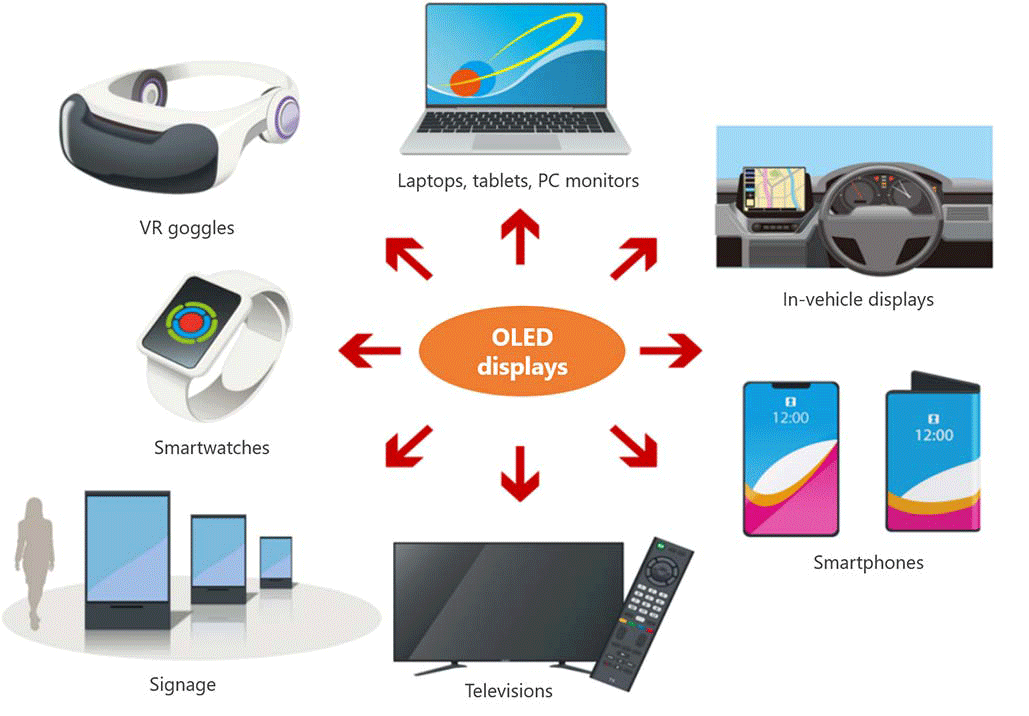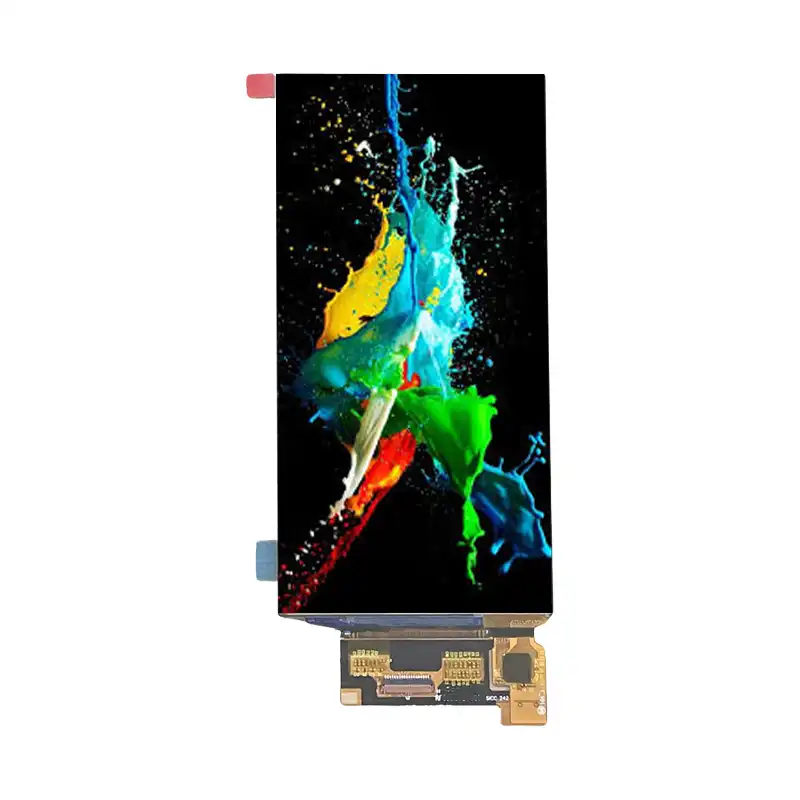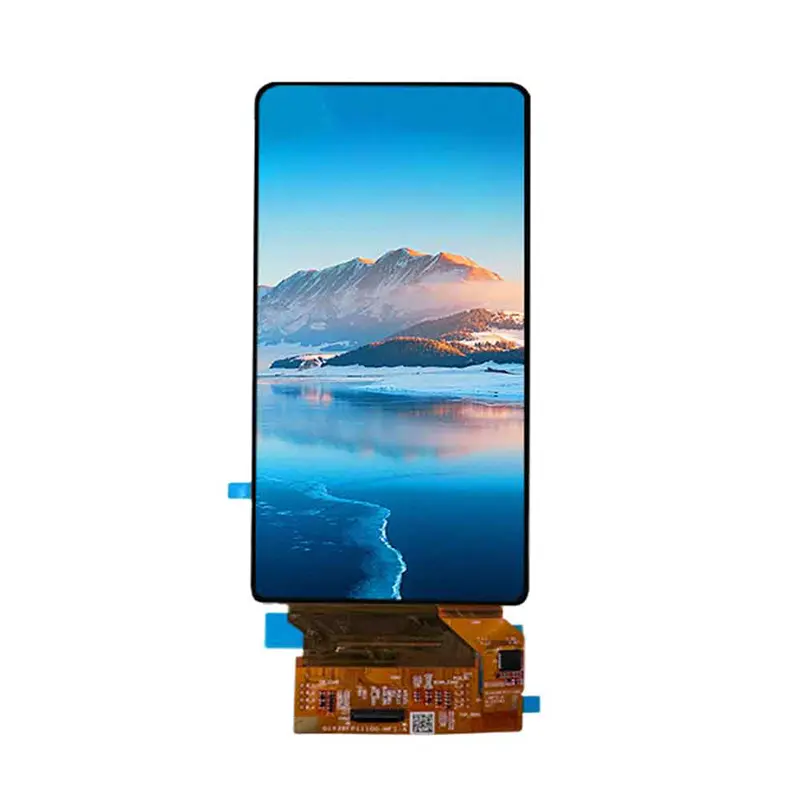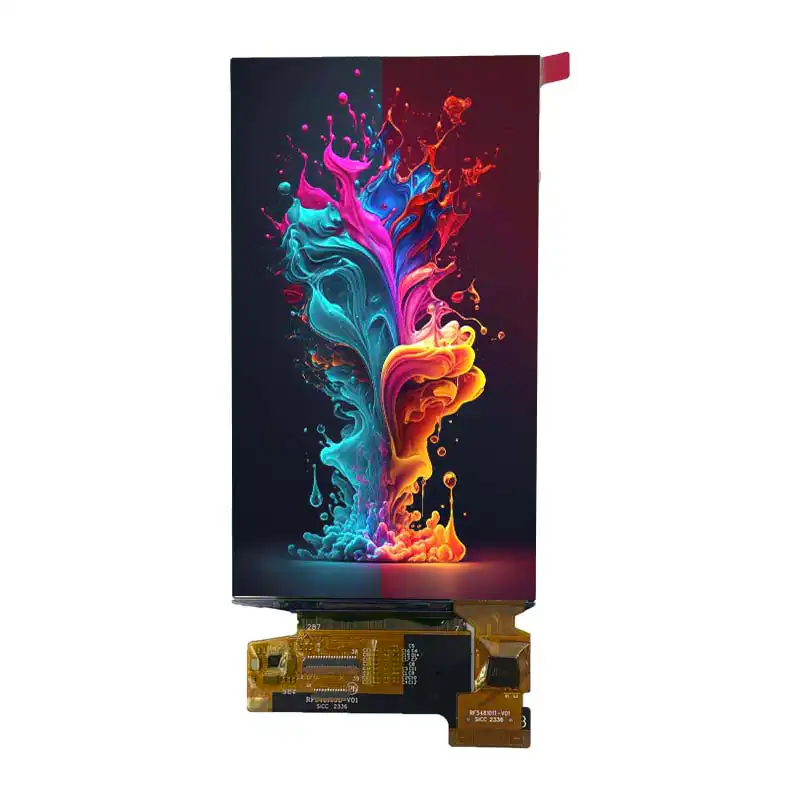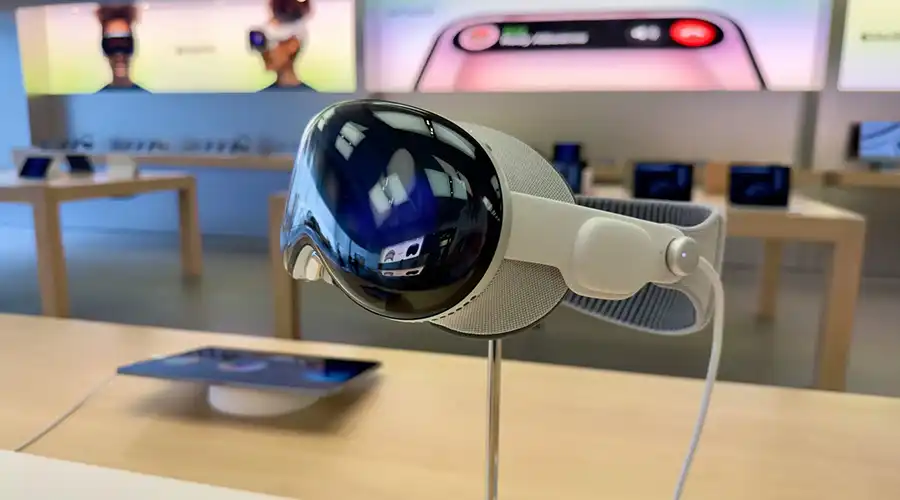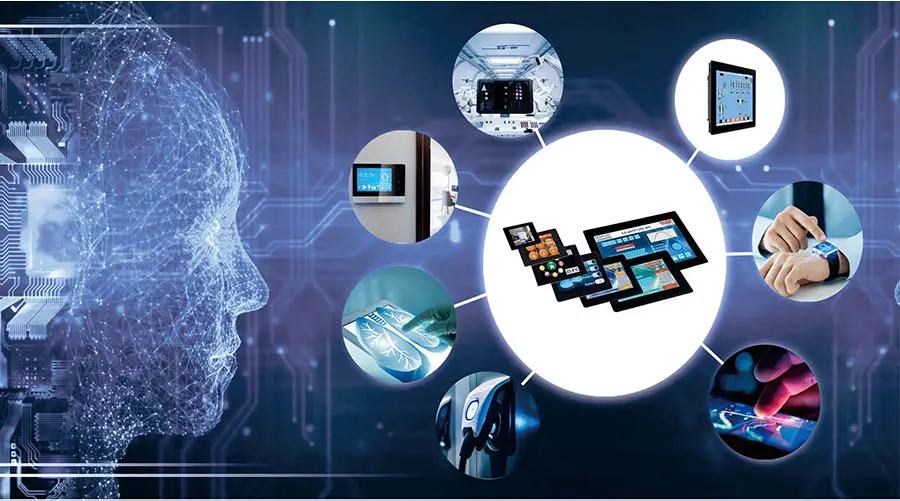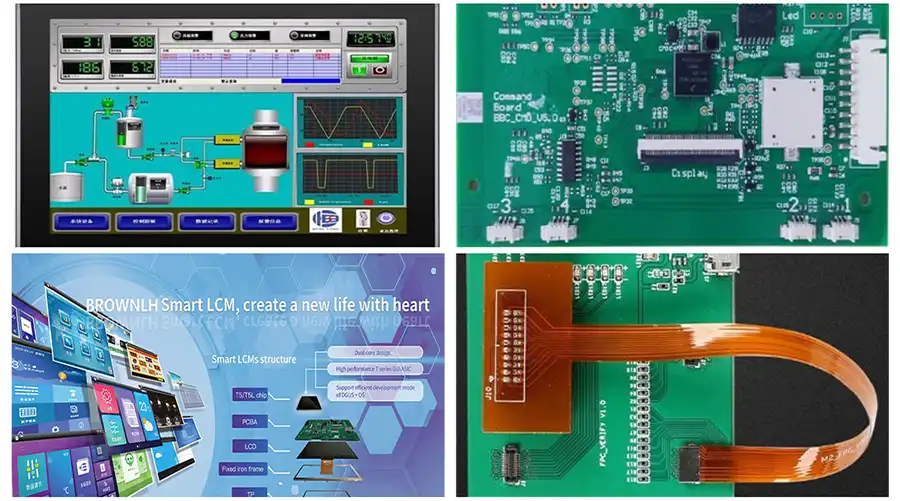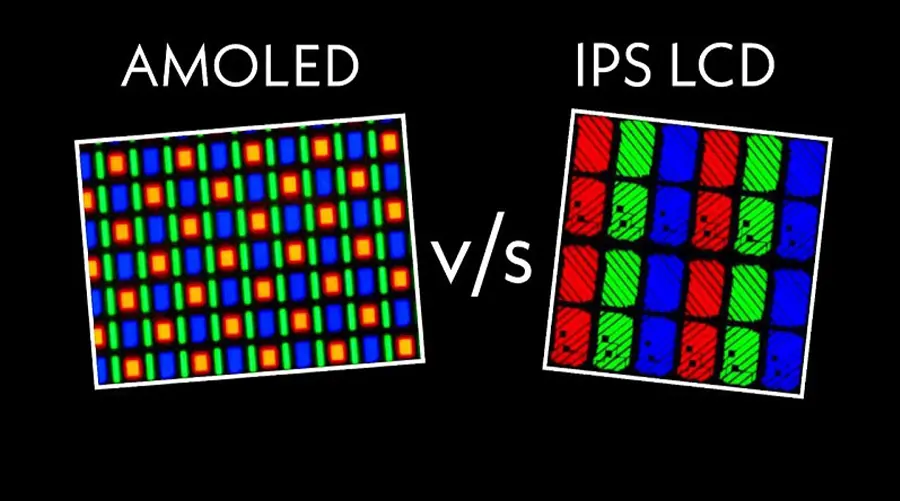Understanding the science, benefits, and transformative impact of organic light-emitting diode (OLED) displays
Introduction to OLED Technology
OLED (Organic Light-Emitting Diode) display technology has revolutionized the visual landscape by leveraging organic semiconductor materials that emit light when an electric current is applied. Unlike traditional Liquid Crystal Displays (LCDs), which require backlighting to produce images, OLEDs are self-emissive, eliminating the need for additional components like polarizers or LED backlights. This fundamental difference enables thinner, lighter, and more energy-efficient displays with superior image quality. Since its commercialization in the late 1990s, OLED technology has become a cornerstone in industries ranging from consumer electronics to automotive and healthcare.

The working principle of OLEDs is based on organic compounds sandwiched between two electrodes—a cathode (electron donor) and an anode (hole donor). When a voltage is applied, electrons and holes recombine in the emissive layer, generating photons through electroluminescence. This process allows each pixel to act independently, enabling features like true black levels, infinite contrast ratios, and ultra-fast response times. The flexibility of organic materials further allows for curved, foldable, and even transparent display designs that were previously unattainable with conventional technologies.
Key Advantages of OLED Displays
OLED technology offers unparalleled performance benefits that set it apart from other display technologies:
True Black Levels: Individual pixel control allows perfect black, resulting in infinite contrast ratios. This is particularly beneficial for dark environments and cinematic experiences.
Ultra-Thin and Flexible Design: The absence of backlights enables foldable, curved, and rollable displays. For example, LG’s rollable OLED TV can retract into a base unit, saving space while maintaining 4K resolution.
Wide Viewing Angles: Consistent image quality at angles up to 178°, ideal for collaborative viewing in meetings or shared entertainment spaces.
Fast Response Times: Sub-millisecond response rates eliminate motion blur in gaming and video, making OLED ideal for high-speed content.
Energy Efficiency: Only active pixels consume power, reducing energy use in low-light scenarios. This is especially advantageous for battery-powered devices like smartphones and wearables.
Lightweight and Durable: Organic materials are inherently lightweight and can be manufactured on flexible substrates, enabling durable yet thin form factors.
Case Study: Samsung’s Galaxy Z Fold series uses ultra-thin OLED panels to create foldable smartphones with minimal thickness and seamless transitions between screen states. The device’s hinge mechanism works in tandem with the flexible OLED to ensure durability over thousands of folds.
Types of OLED Displays
OLED technology is categorized into three main types based on application and structure:
Passive-Matrix OLED (PMOLED): Ideal for small, low-resolution screens like smartwatches and IoT devices. PMOLED uses a grid-like structure where rows and columns are scanned sequentially to activate pixels.
Active-Matrix OLED (AMOLED): High-resolution panels for smartphones, TVs, and monitors with advanced color accuracy. AMOLED employs thin-film transistors (TFTs) to control each pixel individually, enabling higher refresh rates and better performance.
Transparent OLED: See-through displays for AR glasses, smart windows, and interactive retail kiosks. These displays use transparent electrodes and emissive layers to allow visibility through the screen when inactive.
Flexible OLED: Bendable or rollable displays for wearable devices and curved televisions. Flexible OLEDs use plastic substrates instead of rigid glass, enhancing durability and design versatility.
Micro-LED: A hybrid technology combining OLED’s self-emission with inorganic LED durability for ultra-high brightness. Micro-LED is currently in development for next-generation projectors and large-format signage.
For instance, LG’s Signature OLED TVs use AMOLED technology to deliver 4K resolution with 100% DCI-P3 color gamut, while Sony’s professional cinema monitors leverage OLED for precise color grading in film production. Transparent OLEDs are also being tested in automotive applications, such as Mercedes-Benz’s transparent dashboard displays that project navigation data onto the windshield.
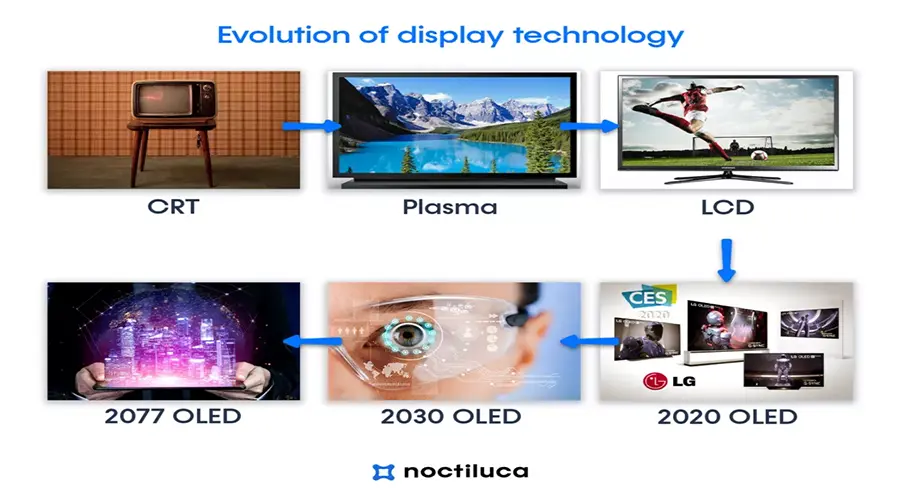
Applications Across Industries
OLED technology is transforming diverse sectors through its versatility:
Consumer Electronics: Smartphones, tablets, and TVs with vivid colors and ultra-thin profiles. Apple’s iPhone models with AMOLED displays now feature always-on display modes and improved color accuracy.
Wearables: Always-on displays for smartwatches and AR/VR headsets. The Apple Watch Series 9 uses an always-on Retina display powered by PMOLED technology, ensuring visibility in any lighting condition.
Automotive: Curved dashboards, transparent HUDs, and rear-seat entertainment systems. BMW’s iX model integrates OLED panels into the dashboard to create a seamless, minimalist interior design.
Healthcare: High-contrast monitors for medical imaging and diagnostics. Philips’ OLED monitors reduce eye strain for radiologists analyzing MRI scans, improving diagnostic accuracy.
Architecture: Dynamic lighting and signage for smart buildings and retail spaces. Samsung’s The Wall modular OLED system allows architects to create custom-sized displays for commercial environments.
Real-World Example: Mercedes-Benz integrates OLEDs into vehicle dashboards, creating adaptive lighting that adjusts to driving conditions and user preferences. In healthcare, Philips’ OLED monitors reduce eye strain for radiologists analyzing MRI scans, improving diagnostic accuracy.
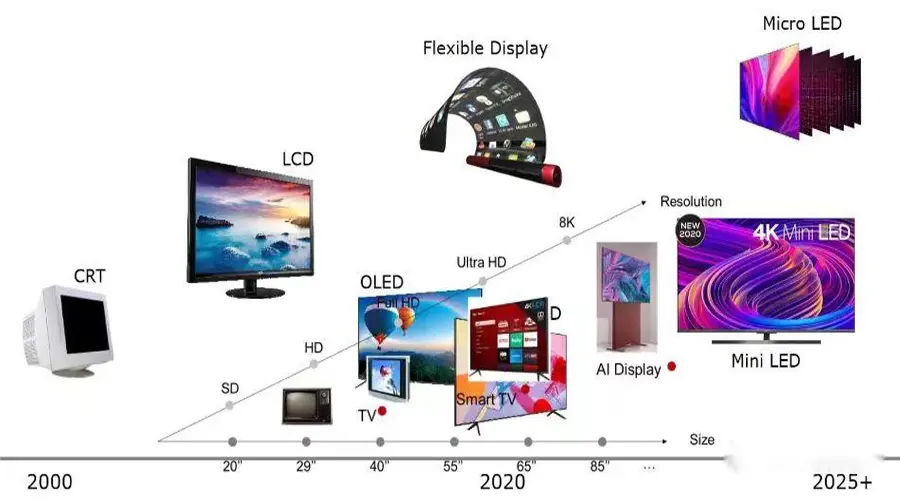
Technical Challenges and Solutions
Despite its advantages, OLED faces challenges that manufacturers are actively addressing:
Lifetime Degradation: Blue OLEDs degrade faster than red/green ones. Solutions include phosphorescent emitters and improved encapsulation techniques to protect against moisture and oxygen.
Manufacturing Complexity: Scaling production for large panels. Innovations like laser patterning and roll-to-roll printing are reducing costs and increasing scalability.
Environmental Stability: Protection against moisture and UV exposure. Multi-layer barrier films now achieve<10-6 g/m²/day water vapor transmission, extending lifespan in harsh conditions.
Power Consumption: White OLEDs require color filters, lowering efficiency. Direct-emission RGB OLEDs bypass this limitation by using separate red, green, and blue subpixels.
Thermal Management: Heat dissipation in flexible displays. Advanced thermal substrates and graphene cooling layers are being tested to maintain performance in curved or foldable devices.
LG Display’s Gen 9.5 factory in South Korea uses laser etching to produce 77-inch OLED TVs with 0.3mm bezels, showcasing advancements in mass production. BOE’s printed OLED technology aims to cut production costs by 30% for large-format screens, making OLED more accessible for mainstream applications.
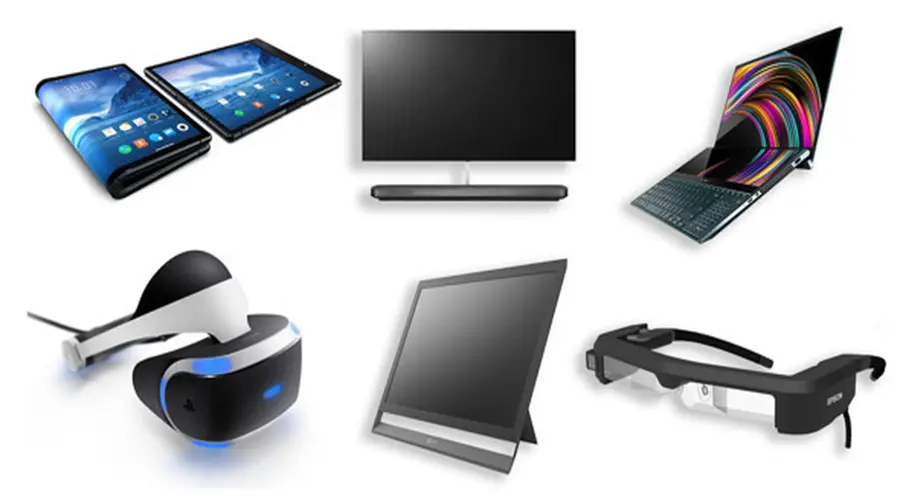
Future Innovations in OLED
OLED technology is evolving rapidly, with emerging trends set to redefine industries:
Stretchable OLEDs: Elastomeric substrates for wearable health monitors and haptic feedback devices. Researchers at Stanford are developing stretchable OLED patches that conform to the skin for real-time health monitoring.
Printed OLEDs: Inkjet printing for large-area, low-cost displays in signage and smart packaging. This technique could enable mass production of OLED billboards and flexible advertising screens.
Quantum Dot OLEDs (QD-OLED): Combines quantum dots with self-emission for enhanced brightness and efficiency. QD-OLED is already being used in premium TVs to achieve higher peak brightness and improved color accuracy.
Biodegradable OLEDs: Eco-friendly materials to address e-waste concerns. Companies like Konica Minolta are experimenting with organic compounds that decompose naturally at the end of their lifecycle.
Transparent and Holographic Displays: Next-gen transparent OLEDs could replace traditional windows in smart homes and offices, while holographic OLEDs may revolutionize virtual reality and augmented reality applications.
Samsung demonstrated a transparent OLED billboard that activates via smartphone scans for context-aware advertising. In 2025, researchers at MIT unveiled a holographic OLED prototype capable of projecting 3D images without the need for special glasses.
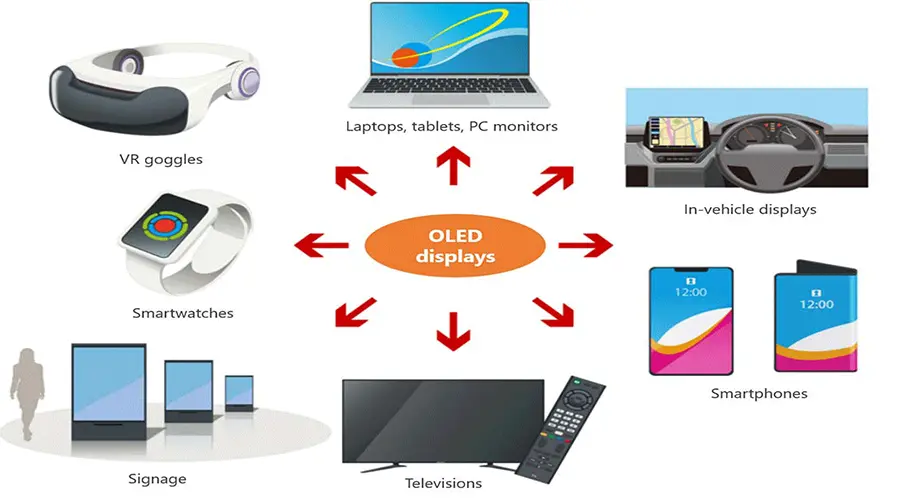
Conclusion and Industry Impact
OLED display technology is reshaping the digital landscape with its unmatched performance, flexibility, and design possibilities. From foldable smartphones to transparent automotive interfaces, OLEDs are enabling experiences once confined to science fiction. As manufacturing scales and innovations like QD-OLED and biodegradable materials mature, OLED will become even more integral to consumer and industrial applications.
For businesses seeking cutting-edge solutions, OLED technology offers a platform for differentiation and growth. Whether you're designing next-gen wearables, reimagining automotive interiors, or exploring sustainable displays, OLED provides the foundation for transformative innovation.
Contact us to discuss tailored OLED display technology solutions for your industry.
Latest articles
-
Why 1–2" AMOLEDs Are Key to AR/XR in 2025
Why 1–2 Inch AMOLED Displays Are Becoming Essential in the AR/XR Boom (2025 Industry Insight)body {f
-
Understanding OLED Display Technology: Principles, Performance & Applications
OLED (Organic Light Emitting Diode) displays are a class of self-emissive display technology in whic
-
From Wearables to AR Glasses – How OLED Displays Are Redefining Visual Experiences in 2025
By 2025, OLED (Organic Light-Emitting Diode) technology has transitioned from luxury smartphone disp
-
Stretched Bar LCD Displays for Retail: Boost Sales & Engagement in Supermarkets
Discover how stretched bar LCD displays enhance supermarket shelf-edge marketing, drive sales, reduc
-
Stretched LCD Solutions for Restaurants and Hospitality Venues
Stretched LCDs offer sleek, high-brightness displays perfect for restaurant menus and hospitality si
Recommended products
-
3.92 INCH OLED Screen I2C Interface 1080 × 1240 Resolution
Product Specifications: BRO392001AResolution: 1080x1024Operating Voltage Range: 28VScreen Size: 3.92
-
6.01 INCH Display OLED screen | High Definition 1080x2160 | MIPI Interface
Product Specifications: BRO601001ADisplayMode: AMOLED Screen Size (inch): 6.01 Resolution: 1080x2
-
6.39 INCH Outdoor AMOLED, 1080x2340, HD, High Brightness
Product Specifications: BRO639001AResolution: 1080x2340Voltage: 2.8VSize: 6.39 inchesDriver IC: SD52
-
5.48 INCH AMOLED Display Module - 1080x1920 I2C, MIPI DSI, Industrial
Product Specifications: BRO548001AResolution: 1080x1920Operating Voltage Range: 2.8VScreen Size: 5.4

